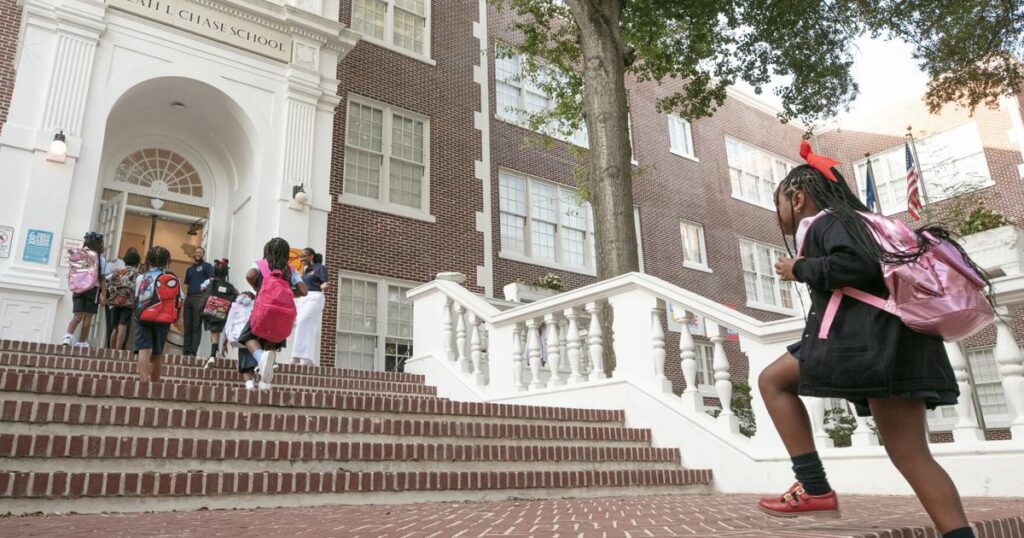New Orleans public education is at a crossroads.
After the school district opened a new traditional public school in August — the first permanent district-run school in nearly two decades — the idea of shifting from a system of charter schools back to a more traditional school district went from a talking point to a real possibility.
But a big question remains: How far do district leaders want to go? Will they be content with opening the occasional one-off school — or will they push for a school system that is more evenly split between district-run and charter schools?
When the Orleans Parish School Board directed NOLA Public Schools Superintendent Avis Williams earlier this year to replace a low-performing charter school with the new district-run Leah Chase School, they also asked her to formulate a plan to open more such schools in the future. Most likely, any new schools would replace charter schools the district shuts down.
On Tuesday, Williams presented her plan. It did not say how many charter versus traditional schools the district would aim for, but it did offer insight into how and when the district might decide to open its own schools.
A plan for opening schools
The first step is to decide when to launch new schools.
Williams’ plan includes a framework to guide those decisions. One consideration is whether the district has the resources to manage more schools, including staff and funding.
Another question is whether there are enough potential students to justify a new school, Williams said. As citywide enrollment declines, the school system might need fewer schools, regardless of whether they are run by charter operators or the district.
Williams also said the district should consider whether a new school would fill a specific need, such as a dedicated school for English learner students or an arts-focused school on the West Bank or New Orleans East.
“These will be individual decisions that are made based on opportunities,” she said.
Once the district decides to open a school, the next step is to figure out how.
Williams’ plan presented two district-run school models. The first is a “transformation,” where the district retains most of a charter school’s staff and aspects of its identity but tweaks the school’s instructional model and puts funding toward school improvements.
The other option is an entirely new school, like Leah Chase. This model entails a near-complete overhaul, including significant changes to a school’s instructional model, staff and grade span, and is significantly more expensive, Williams said. The district budgeted for $3.8 million in startup costs for The Leah Chase School.
Lingering questions
Even as Williams presented her plan for running schools, the board appeared undecided about what to do with it.
Board member Nolan Marshall said the district should assess what schools and programs already exist and look for gaps, rather than pick a “number out of the sky” as an optimal percentage of schools that should be run by the district.
“That’s the basis on which we begin to make prudent decisions about whether we’re going to take over a school,” he said at Tuesday’s board meeting.
Board member Ethan Ashley said it might be difficult to form a full plan for the future without demographic and enrollment data. Even so, he said, the board should consider creating a shared vision for “where we want to head.”
Caroline Roemer, president of the Louisiana Association of Public Charter Schools, said that the board “needs to get their house in order before they start running schools.”
She argued that recent events call into question whether the district can effectively manage its own schools while also support the school system’s dozens of independently operated charter schools. Last week, NOLA Public Schools said it gave charter schools overinflated tax revenue projections in March, an accounting error that could have catastrophic consequences for students across the city.
“One has to wonder with this latest crisis,” she said, “was NOLAPS-PS too busy opening their own school that they didn’t take care of the schools they have?”
At their Tuesday meeting, board members indicated they will introduce a policy to ensure district-run schools are held to the same standards as charter schools. If charter schools do not meet certain performance standards, they risk losing their right to operate, but it’s unclear what consequences a district-run school could face.
Even as board members mulled opening more schools, they received a stark reminder that running even one school can be a daunting task.
Shelita Jones, the district’s chief academic officer, told the board that nearly half of Leah Chase students in grades K-3 started the school year two or more grade levels behind in reading. And just 4% students in grades K-5 started at or above grade level in math.
Board member Leila Eames, who has advocated for more traditional schools, called the data “dismal.”
“But,” she said, “we have nowhere to go but up.”

